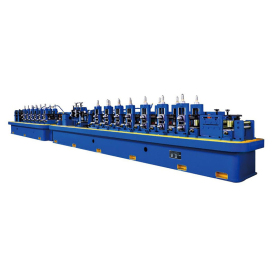
Maximizing Efficiency and Quality with Mould for Tube Mill
In the manufacturing industry, tube mills play a crucial role in producing a wide range of tubes used in various applications, from construction to automotive industries. To ensure the efficiency and quality of tube production, having the right mould for the tube mill is essential.
Moulds for tube mills are specially designed components that shape and form the metal tubes as they pass through the mill. These moulds come in various shapes and sizes, depending on the desired specifications of the tubes being produced. The quality of the mould directly impacts the quality of the final product, as well as the efficiency of the production process.

Maximizing Efficiency and Quality with Mould for Tube Mill
One of the key factors to consider when choosing a mould for a tube mill is the material used for its construction. Moulds are typically made from high-quality steel or other durable materials that can withstand the high temperatures and pressures involved in the tube forming process. Using a high-quality mould can help prevent wear and damage, resulting in longer-lasting equipment and fewer production delays due to maintenance or repairs.
Another important consideration when selecting a mould for a tube mill is the design and precision of the mould. The shape and dimensions of the mould must be carefully calibrated to produce tubes that meet the required specifications for diameter, thickness, and quality. A well-designed mould can help minimize defects, such as uneven wall thickness or surface imperfections, ensuring consistent and high-quality tube production.
In addition to material quality and design precision, the overall performance of the mould also plays a significant role in the efficiency of the tube mill. A high-performance mould can help increase production speeds, reduce downtime, and optimize energy consumption. Moulds that are properly maintained and regularly inspected can help maximize the overall efficiency of the tube mill, resulting in lower production costs and higher output levels.
Furthermore, technological advancements in mould design and manufacturing have led to the development of innovative features that can further enhance the performance of tube mills. For example, some moulds are equipped with cooling systems that help regulate the temperature during the tube forming process, reducing the risk of overheating and improving overall product quality. Other advanced features, such as integrated sensors and monitoring systems, can provide real-time data on the condition of the mould and help predict potential issues before they affect production.

Maximizing Efficiency and Quality with Mould for Tube Mill
In conclusion, the mould for a tube mill is a critical component that directly impacts the efficiency and quality of tube production. Choosing a high-quality mould made from durable materials, precision-designed, and high-performance can help maximize the capabilities of the tube mill and ensure consistent, high-quality tube output. By investing in the right mould for the tube mill, manufacturers can improve their production processes, reduce operating costs, and ultimately increase their competitiveness in the market.Cost-effective ERW tube mill options


